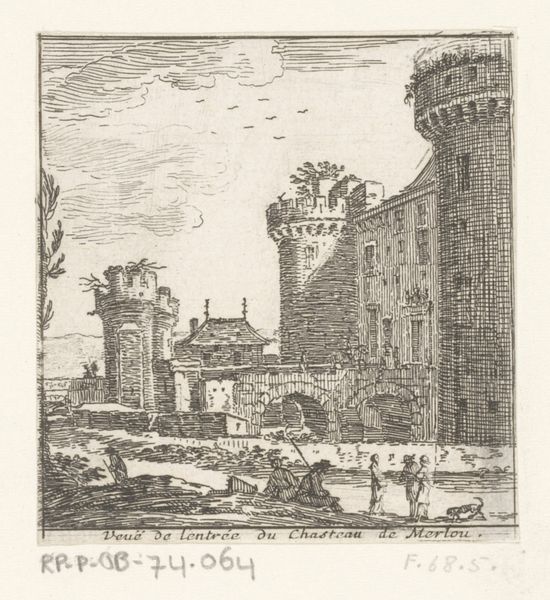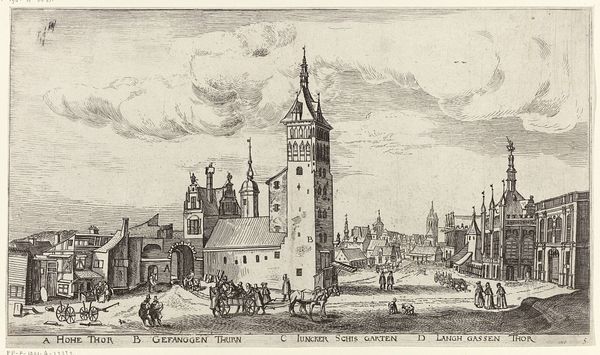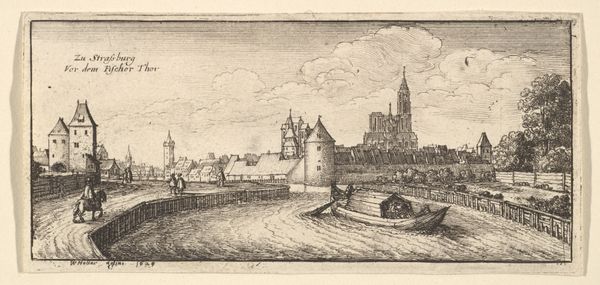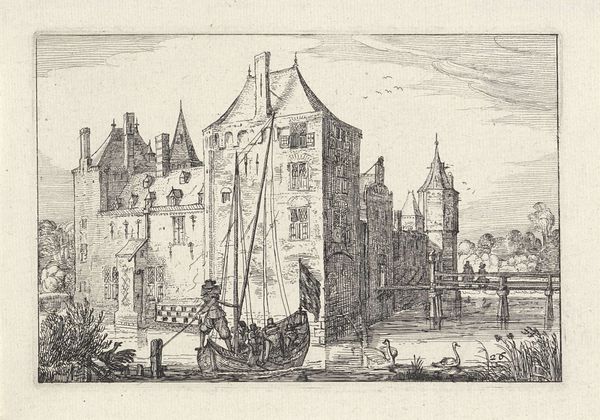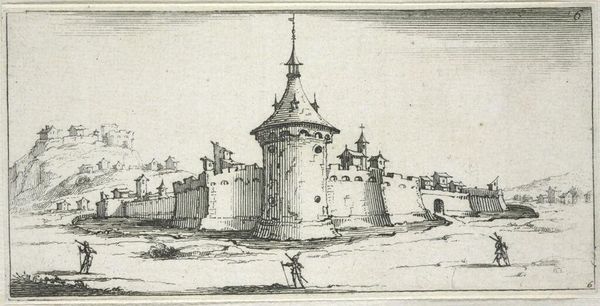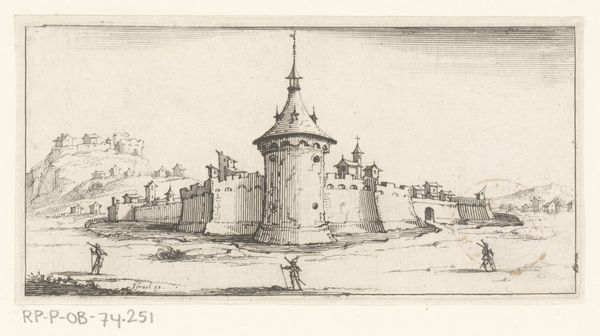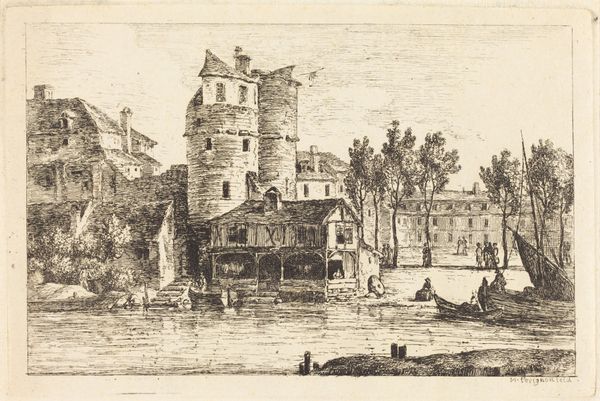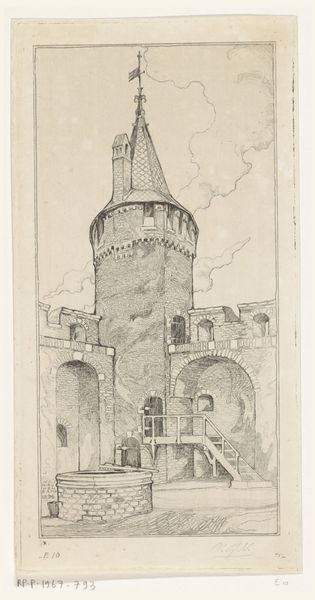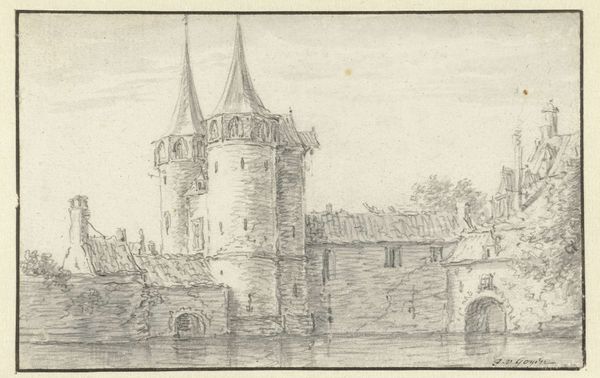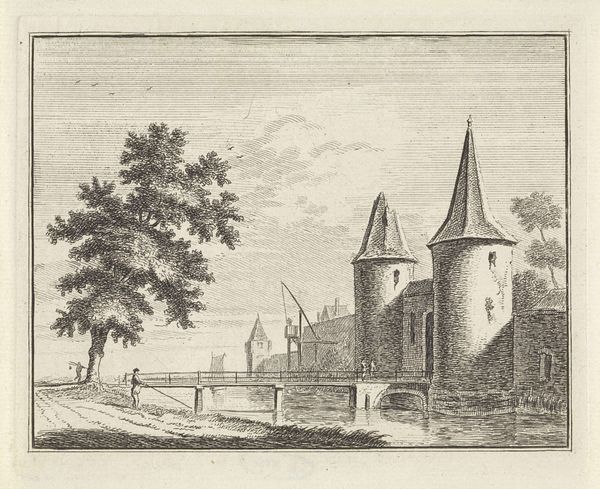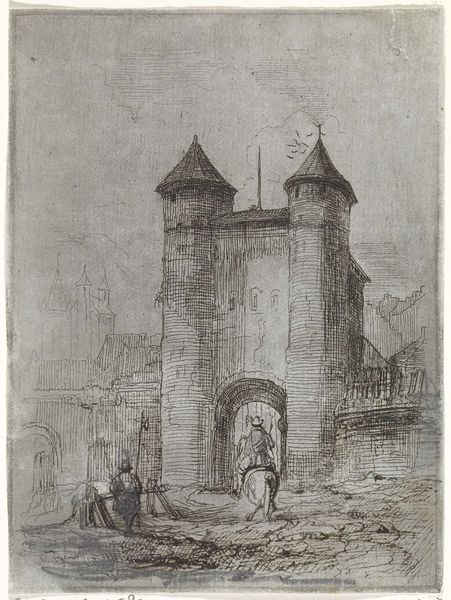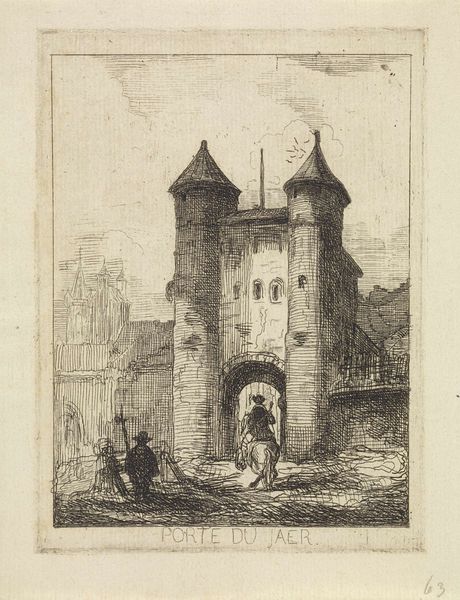
Tour Saint-Nicolas, La Rochelle (Saint Nicholas Tower, La Rochelle) 1929
0:00
0:00
print, etching, engraving
# print
#
etching
#
cityscape
#
engraving
#
realism
Dimensions: image: 26.19 × 32.39 cm (10 5/16 × 12 3/4 in.) plate: 27.62 × 33.66 cm (10 7/8 × 13 1/4 in.) sheet: 35.4 × 43.18 cm (13 15/16 × 17 in.)
Copyright: National Gallery of Art: CC0 1.0
Curator: William Washington’s "Tour Saint-Nicolas, La Rochelle," created around 1929, is a compelling print. What strikes you immediately? Editor: The sheer weight of it! That massive tower, rendered in such detail with etching and engraving, it's almost oppressive. A stark, angular structure dominates the entire composition. Curator: Absolutely, and knowing the context adds another layer. These towers, symbols of maritime power and control, also speak to colonial histories and the surveillance of populations. La Rochelle was a Huguenot stronghold, besieged and ultimately subdued in the 17th century. This tower witnessed that history. Editor: The artist really draws our eye upwards, along those strong vertical lines, emphasizing its height and solidity. It feels immutable. Curator: Indeed. Consider the people bustling around the base; they are dwarfed by the tower, their activities seemingly inconsequential in comparison to the historical weight and the institutional power the structure embodies. The presence of laborers suggests potential renovation, or continual upkeep. Editor: You see figures rendered with incredibly fine lines that creates dynamic tonal variations within this sepia palette. Light glances off the stone, revealing every texture. The artist seems to be exploring contrasts not only in light, but also between rough and smooth, ancient and relatively modern. Curator: That meticulous attention to texture you describe is also crucial to how this print conveys a sense of time, or perhaps the relationship between different epochs. Washington presents the tower in the present, with suggestions of its complicated past—a past of religious persecution, for example—in which ordinary people are enmeshed. Editor: This has shifted my view; initially I was focused solely on its structural forms and graphic patterns. But now I find I'm more alert to the social context the image evokes and suggests. Curator: And seeing it primarily through your formalism helps us remain attentive to the ways those visual techniques communicate those historical and social relations so acutely. I think we both found compelling points here.
Comments
No comments
Be the first to comment and join the conversation on the ultimate creative platform.
